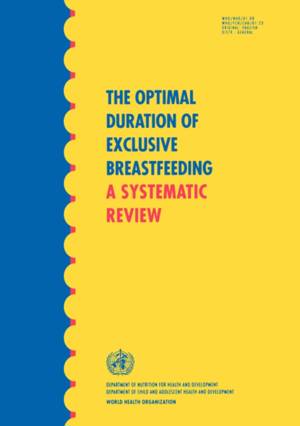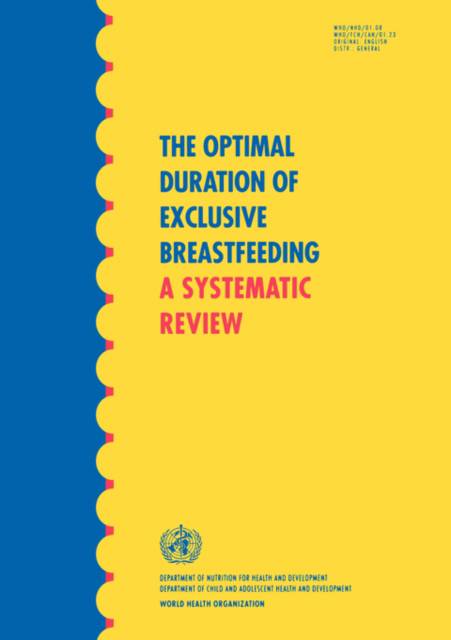
Je cadeautjes zeker op tijd in huis hebben voor de feestdagen? Kom langs in onze winkels en vind het perfecte geschenk!
- Afhalen na 1 uur in een winkel met voorraad
- Gratis thuislevering in België vanaf € 30
- Ruim aanbod met 7 miljoen producten
Je cadeautjes zeker op tijd in huis hebben voor de feestdagen? Kom langs in onze winkels en vind het perfecte geschenk!
- Afhalen na 1 uur in een winkel met voorraad
- Gratis thuislevering in België vanaf € 30
- Ruim aanbod met 7 miljoen producten
Zoeken
The Optimal Duration of Exclusive Breastfeeding
A Systematic Review
Department of Child and Adolescent Health
€ 20,45
+ 40 punten
Omschrijving
The longstanding debate over the optimal duration of exclusive breastfeeding has centered on the so-called "weanling's dilemma" in developing countries: the choice between the known protective effect of exclusive breastfeeding against infectious morbidity and the (theoretical) insufficiency of breast milk alone to satisfy the infant's energy and micronutrient requirements beyond 4 months of age.
The primary objective of this review is to assess the effects on child health, growth, and development, and on maternal health, of exclusive breastfeeding for 6 months vs exclusive breastfeeding for 3-4 months with mixed breastfeeding (introduction of complementary liquid or solid foods with continued breastfeeding) thereafter through 6 months.
The primary objective of this review is to assess the effects on child health, growth, and development, and on maternal health, of exclusive breastfeeding for 6 months vs exclusive breastfeeding for 3-4 months with mixed breastfeeding (introduction of complementary liquid or solid foods with continued breastfeeding) thereafter through 6 months.
Specificaties
Betrokkenen
- Auteur(s):
- Uitgeverij:
Inhoud
- Aantal bladzijden:
- 50
- Taal:
- Engels
- Reeks:
- Reeksnummer:
- nr. 942
Eigenschappen
- Productcode (EAN):
- 9789241595643
- Verschijningsdatum:
- 15/12/2002
- Uitvoering:
- Paperback
- Formaat:
- Trade paperback (VS)
- Afmetingen:
- 210 mm x 297 mm
- Gewicht:
- 149 g

Alleen bij Standaard Boekhandel
+ 40 punten op je klantenkaart van Standaard Boekhandel
Beoordelingen
We publiceren alleen reviews die voldoen aan de voorwaarden voor reviews. Bekijk onze voorwaarden voor reviews.









